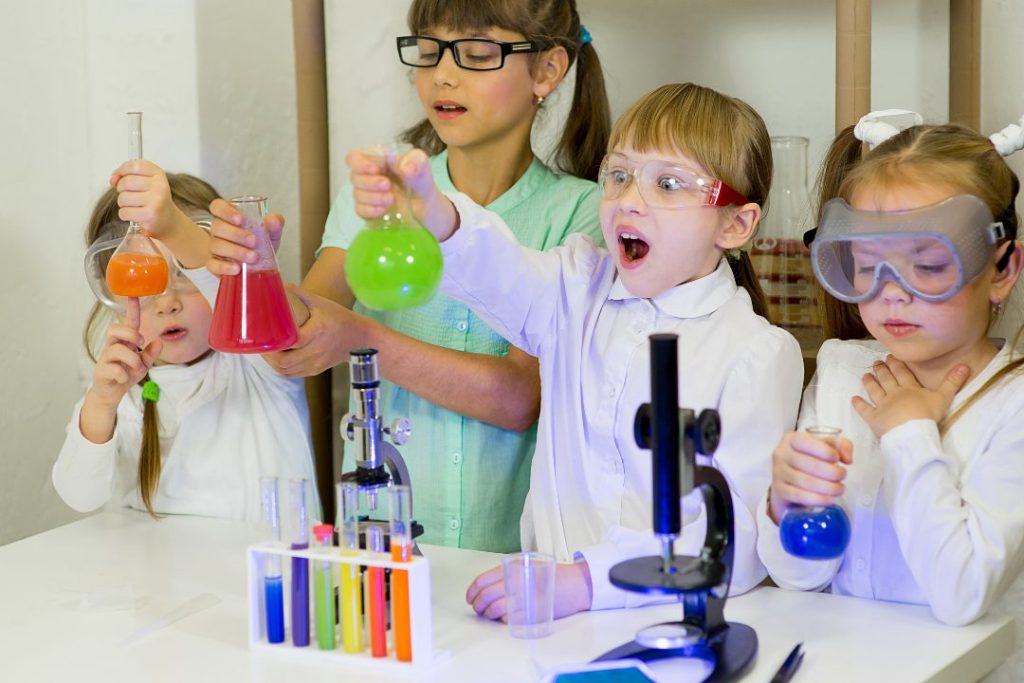
The Coolest Seasonal Science Experiments to Try
- Lutful Ahmed
- August 13, 2024
- 7:12 pm
- No Comments
Exploring science can be a fun and engaging way to learn, especially when you incorporate the changing seasons into your experiments. From winter weather wonders to summer science, these seasonal experiments are perfect for kids and families looking to combine learning with play. Here’s a collection of exciting and educational science experiments to try at home, themed around each season.
Spring Science Experiments
1. Seed Germination
Spring is the perfect time to observe how seeds grow into plants. This experiment helps kids understand the basics of plant biology and the conditions needed for seeds to germinate.
Materials: Seeds (such as beans or sunflowers), soil, small pots, water, and sunlight.
Procedure:
- Plant seeds in small pots filled with soil.
- Water them regularly and place them in a sunny spot.
- Observe the growth of the seeds over time, noting changes in sprout development and root formation.
2. Flower Chromatography
This experiment explores the colors of flowers and how they can be separated into different pigments.
Materials: White flowers (such as carnations), food coloring, water, cups, and paper towels.
Procedure:
- Add food coloring to water in different cups.
- Place a flower in each cup and observe how the petals change color over time.
- Compare the results and discuss how the colors travel through the flower.
Summer Science Experiments
1. Making Ice Cream in a Bag
Summer is the perfect time to cool off with homemade ice cream. This experiment demonstrates how different temperatures affect the state of matter.
Materials: Milk, sugar, vanilla extract, ice, salt, ziplock bags, and a towel.
Procedure:
- Mix milk, sugar, and vanilla in a small ziplock bag.
- Fill a larger ziplock bag with ice and salt.
- Place the smaller bag inside the larger bag and shake vigorously for about 5-10 minutes.
- Remove the small bag, wipe it off, and enjoy the homemade ice cream!
2. Solar Oven S’mores
Utilize the summer sun to make s’mores with a simple solar oven, exploring concepts of energy and heat transfer.
Materials: Pizza box, aluminum foil, plastic wrap, black construction paper, and s’mores ingredients (graham crackers, chocolate, marshmallows).
Procedure:
- Line the inside of the pizza box with black construction paper.
- Cover the box with aluminum foil and plastic wrap to create a greenhouse effect.
- Place the s’mores ingredients inside the box and leave it in direct sunlight.
- Observe how the sun’s energy melts the marshmallows and chocolate.
Autumn Science Experiments
1. Creating a Homemade Barometer
Autumn’s changing weather can be tracked with a simple homemade barometer, helping kids understand atmospheric pressure.
Materials: A glass jar, a balloon, a rubber band, a straw, and tape.
Procedure:
- Cut the balloon to create a flat sheet and stretch it over the top of the jar.
- Secure it with a rubber band.
- Attach the straw to the center of the balloon with tape, leaving a small gap.
- Observe how the straw moves as the air pressure changes.
2. Leaf Chromatography
Explore the colors of autumn leaves and how different pigments are present in them.
Materials: Autumn leaves, rubbing alcohol, coffee filters, and a jar.
Procedure:
- Crush leaves and place them in a jar with rubbing alcohol.
- Soak coffee filters in the mixture and let them dry.
- Observe how the colors separate and discuss the pigments present in the leaves.
Winter Science Experiments
1. Creating Snowflakes with Borax
Explore the formation of snowflakes and crystals with this winter-themed experiment.
Materials: Borax, hot water, a jar, pipe cleaners, and a string.
Procedure:
- Shape pipe cleaners into snowflake shapes and tie a string to each.
- Dissolve Borax in hot water and pour it into a jar.
- Hang the pipe cleaners in the jar and leave it overnight.
- Observe how Borax crystals form on the pipe cleaners.
2. Making a Snow Volcano
Combine the winter theme with a fun volcanic eruption experiment.
Materials: Baking soda, vinegar, food coloring, dish soap, and a small container.
Procedure:
- Mix baking soda with food coloring and dish soap in the container.
- Pour vinegar over the mixture to create an explosive volcanic eruption.
- Discuss the chemical reactions taking place and the concept of pressure.
Conclusion
Seasonal science experiments offer a fantastic way to learn about the natural world and have fun at the same time. By aligning your experiments with the seasons, you can make science feel fresh and relevant throughout the year. Try these experiments with your family and discover the wonders of science in every season!
